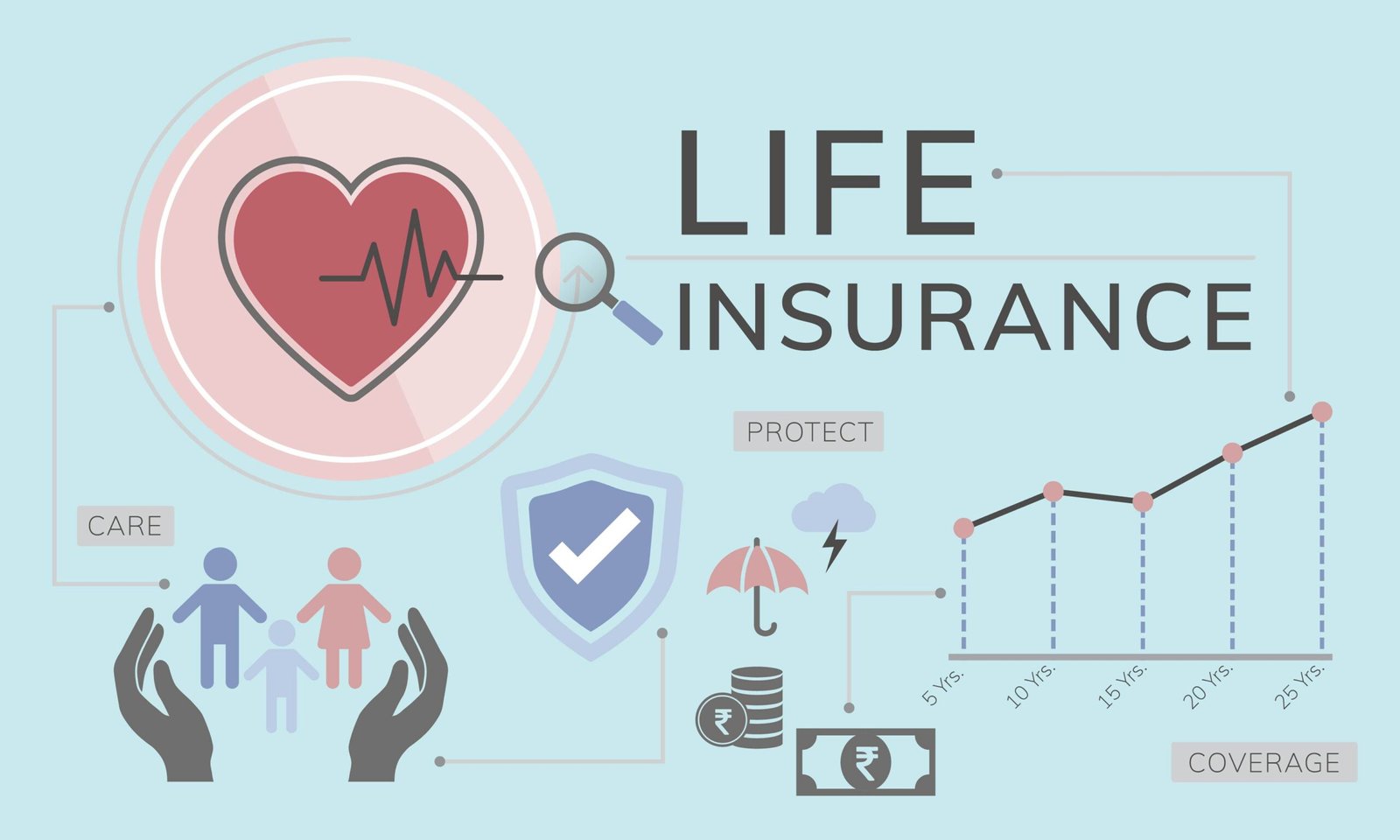Benefits and Drawbacks of Life Insurance
The primary benefit of life insurance is that it provides financial protection for your loved ones in the event of your death. While it may be more affordable than you think, the main drawback of life insurance is its cost
Important Lessons Learned
- For most individuals, the primary benefit of owning life insurance—financial security for your loved ones—outweighs the primary drawback, which is paying premiums.
- Purchasing coverage early can help lock in lower rates. Life insurance premiums generally decrease with age and better health.
- The benefits and drawbacks of purchasing life insurance also depend on your financial situation and the type of policy you choose.
Benefits of obtaining life insurance
1.] Life insurance offers financial security for your family.
The death benefit from your life insurance policy, which is the amount paid to your beneficiaries in the event of your death, can help cover future living expenses for your family, such as children’s college tuition or mortgage payments. It can also serve as a financial safety net for unexpected costs.
Since the death benefit is usually paid out as a tax-free lump sum, your family can use the funds for a variety of needs, including:
- Final expenses, such as burial fees or hospital bills
- Housing expenses, including rent or mortgage payments
- Outstanding debts, such as credit card balances, auto loans, or student loans
- Your children’s current or future higher education costs
- Child support
- Replacing the income you provided
- Living expenses, such as food, transportation, and medical care
- Taking a vacation
2.] Life insurance is affordable for most people.
Term life insurance is generally a cost-effective option. Your monthly premiums could be as low as $20, depending on your age at the time of application and the coverage amount you choose.
Term life insurance lasts only for the duration you need, and the younger you are when you purchase the policy, the lower your premiums will be.
3.] Life insurance offers mental security.
Like health insurance or auto insurance, life insurance is a product you hope you never have to use, but in the unfortunate event that you do, you know you’re covered for the worst-case scenario.
This peace of mind is crucial, especially for those with significant debts or dependent family members.
4.] Life insurance completes your financial plan.
The goal of life insurance is to provide a financial safety net for your family in the event of your death. For this reason, most people choose to purchase a life insurance policy that will protect them until retirement.
A life insurance policy ensures your family’s financial security if you pass away before reaching retirement age, especially if you have debt or dependents relying on your income.
A small percentage of individuals may find whole life insurance to be a useful tool in their financial planning. Whole life insurance can serve as an additional investment option to help you leave more for your family, especially if you’ve already taken advantage of other investment options like an IRA or 401(k).
5.] Life insurance is flexible.
Riders are optional additions to your life insurance policy that allow you to customize it and increase coverage for specific circumstances. You can ask your agent about the available riders for your policy and determine whether adding them makes financial sense.
Choices include:
- Accelerated Death Benefit Rider: If you receive a terminal diagnosis, you may be eligible to receive all or a portion of the death benefit before passing away.
- Long-Term Care Rider: This allows you to withdraw funds from your death benefit if you need long-term care, such as living in a nursing facility.
- Disability Income Rider: If you become disabled and are unable to work, you will receive a monthly income.
- Waiver of Premium Rider: If you become disabled, this rider allows you to keep your insurance coverage while your premiums are waived for the duration of your disability.
- Term Conversion Rider: This rider enables you to convert your term insurance policy into permanent coverage.
6.] Applying for life insurance is easier than ever.
Online life insurance pricing comparison is made easy by Policygenius. In just ten minutes or less, you can get free quotes from some of the top life insurance providers in the country.
Our team of non-commissioned agents can help you determine the right type of life insurance for your needs, the amount of coverage you need, and guide you through the application process.
The Drawbacks of Purchasing Life Insurance
1.] The cost of life insurance may be higher if you’re older or have health conditions.
The best time to buy life insurance is when you’re young and in good health. Your age, family medical history, and overall health all impact your premiums. Life insurance can become too expensive and may not be worth it if you’re older or have significant health issues.
If you have a history of high-risk hobbies or conditions that could increase your risk, like skydiving or chronic illnesses, life insurance companies may charge you higher premiums. Be sure to disclose any health concerns to your agent during your discussion, so they can give you the most accurate quotes.
2.] The cost of whole life insurance is high, and if you can’t afford to maintain it, surrender charges may apply.
Term life insurance is much less expensive than whole life insurance, which can often cost hundreds of dollars a month. Buying a whole-life policy when you’re young could mean paying high premiums for coverage you may not even need, as most people require less life insurance after retirement.
Term life insurance is a more affordable option to consider. This way, you avoid paying high premiums, and your coverage lasts only as long as you need it.
3.] The cash value component is a less effective way of making investments.
The cash value component of whole life insurance policies offers a fixed interest rate. Once enough value has accumulated, you can borrow against it or use the cash value to pay premiums.
However, the rate of return on a cash value account is generally lower compared to investing in a 401(k), Roth IRA, or other investment options. Additionally, it may take years or even decades to build up enough value to support a loan or withdrawal.
It’s usually smarter to pay less for term life insurance and invest the difference in a regular retirement account or increase your 401(k) contributions, unless you’ve already maximized other investments.
4.] Getting life insurance can be a complicated process.
When it comes to life insurance, there are many questions to consider. For example, what type of policy is best for me? Should I choose whole life or term life? Can I even qualify for coverage? Do some companies offer lower prices for the same level of risk?
Applying for life insurance on your own can be challenging, but we can help.
Working with an independent broker like Policygenius makes it easier to find the right coverage at the right price. Our agents are not paid on commission, so they can help you find a policy that fits your budget and meets your financial needs.





